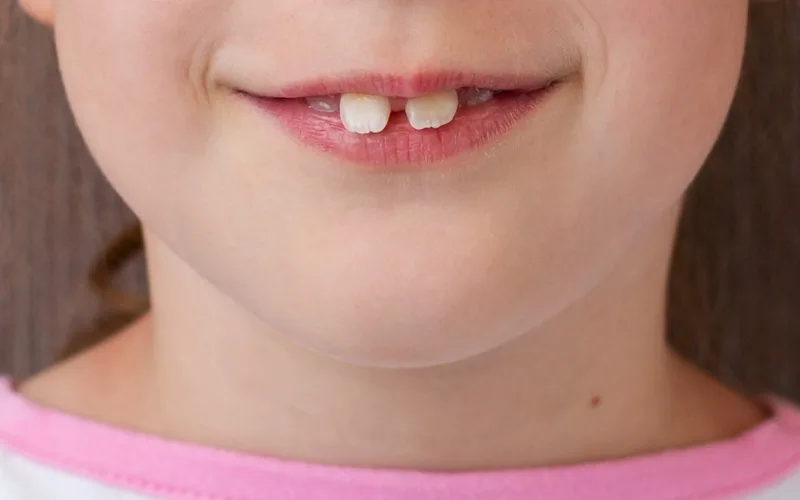Overjet, commonly known as “buck teeth,” refers to a specific dental malocclusion where the upper front teeth visibly protrude beyond the lower front teeth. This condition is prevalent globally, affecting a significant portion of the population; studies indicate that overjet can be observed in approximately 15-20% of children and adolescents. The visual impact of this misalignment is often the primary concern for individuals. However, the implications extend beyond aesthetics, potentially influencing oral function and overall dental health. Early identification and understanding of this condition are paramount for effective management and intervention. While the most noticeable characteristic is the anterior-posterior discrepancy between the upper and lower incisors, the underlying causes and potential long-term effects warrant careful consideration. The subtle nuances of overjet necessitate a precise and informed approach to its assessment and resolution.
Table of Contents
What Causes Buck Teeth and How Do They Develop?
Buck teeth meaning refers to a dental condition where the upper front teeth protrude significantly forward beyond the lower teeth, creating a pronounced overbite. This teeth protrusion, medically termed maxillary protrusion, occurs when the upper jaw extends excessively or the upper teeth angle outward. The condition represents a specific type of malocclusion that affects both dental function and facial aesthetics.
Several anatomical and behavioural factors contribute to the development of protrusive teeth:
- Genetic predisposition – Inherited jaw size discrepancies and tooth positioning patterns significantly influence buck teeth development
- Prolonged thumb sucking – Extended sucking habits beyond age four create forward pressure on developing upper teeth
- Tongue thrusting – Persistent forward tongue placement during swallowing pushes upper teeth outward
- Mouth breathing – Chronic nasal congestion forces mouth breathing, altering natural tongue positioning and jaw development
- Early tooth loss – Premature loss of baby teeth disrupts normal eruption patterns of permanent teeth
- Jaw size discrepancies – Skeletal imbalances between upper and lower jaw growth rates
What causes buck teeth often involves multiple contributing factors working simultaneously. Developmental timingplays a crucial role, as most buck teeth overbite conditions establish during childhood when facial bones and teeth undergo rapid growth. Our extensive clinical observations indicate that hereditary factors account for approximately 60% of buck teeth cases, whilst environmental influences contribute to the remaining 40%.
The development of buck teeth human dentition significantly impacts oral health and facial structure. Severe teeth protrusion increases tooth trauma risk during accidents, creates difficulties with proper lip closure, and complicates effective oral hygiene maintenance. The condition affects speech articulation, particularly with certain consonant sounds, and influences facial profile aesthetics.
Advanced cases of protrusive teeth often involve skeletal components, where the entire upper jaw positioning contributes to the forward tooth placement. This dentofacial relationship requires comprehensive evaluation to determine whether the condition stems from dental positioning alone or involves underlying skeletal growth patterns affecting long-term oral health outcomes. In cases where buck teeth are prominent, Dental Caps for Front Teeth can sometimes be used as a corrective measure. However, it is crucial to assess if skeletal realignment is also necessary for a more comprehensive solution.
Different Types and Severity Levels of Buck Teeth
Buck teeth, clinically known as Class II malocclusion, present in various forms and severity levels. Understanding these classifications helps orthodontists determine appropriate treatment approaches and enables patients to recognise their specific condition.
Severity classifications of buck teeth range from minor to extreme presentations:
- Mild buck teeth: Characterised by slight protrusion of 2-4mm beyond normal positioning, often barely noticeable in casual conversation
- Moderate buck teeth: Feature more pronounced forward positioning of 4-7mm, creating visible gaps between upper and lower teeth
- Severe buck teeth: Display significant protrusion exceeding 7mm, substantially affecting facial profile and function
- Extreme buck teeth: Represent the most pronounced cases where upper teeth extend dramatically forward, often preventing proper lip closure
Anatomical variations further distinguish different types of buck teeth presentations:
- Large buck teeth: Involve oversized upper incisors that appear disproportionate to other teeth
- Small buck teeth: Present as normal-sized teeth positioned too far forward
- Slightly protruding teeth: Exhibit minimal forward displacement, sometimes called minor buck teeth
- Bottom buck teeth: Occur when lower teeth protrude forward, creating reverse overjet
Clinical assessment reveals that real buck teeth typically involve both skeletal and dental components. Straight buck teeth maintain proper alignment amongst themselves whilst protruding forward collectively. Bad buck teeth combine protrusion with additional complications like crowding, spacing, or rotational malpositions.
Our extensive experience treating various presentations demonstrates that accurate classification remains crucial for treatment planning. Each severity level requires specific orthodontic approaches, from simple repositioning for slight cases to comprehensive treatment involving multiple phases for extreme presentations.
Professional Treatment Options for Buck Teeth
Addressing protruding teeth requires professional intervention to achieve optimal results safely and effectively. Modern orthodontic and cosmetic dentistry approaches offer comprehensive solutions for fixing buck teeth adults and children alike.
Braces and Orthodontic Solutions
Several orthodontic treatments effectively address teeth protrusion treatment with proven success rates:
- Traditional metal braces – Most cost-effective option for comprehensive buck teeth straightening
- Ceramic braces – Less visible alternative with similar effectiveness to metal braces
- Lingual braces – Hidden behind teeth for discreet treatment
- Clear aligners – Removable option suitable for mild to moderate cases
- Functional appliances – Correct jaw positioning alongside tooth movement
The orthodontic treatment process follows these established steps:
- Comprehensive examination including X-rays and dental impressions
- Treatment planning with precise measurements and timeline establishment
- Appliance placement with initial adjustment period
- Regular monitoring through monthly adjustment appointments
- Retention phase using retainers to maintain results
Clinical experience demonstrates that braces fix buck teeth effectively in 85-95% of cases when patients maintain proper compliance.
Cosmetic Dentistry Options
For adults seeking alternatives to traditional orthodontics, several cosmetic dentistry for buck teeth procedures provide excellent results:
- Porcelain veneers – Immediate transformation for mild protrusion cases
- Dental crowns – Comprehensive reshaping for severely protruding teeth
- Dental bonding – Conservative approach for minor adjustments
- Tooth contouring – Reshaping natural teeth for improved alignment
- Combination treatments – Integrating multiple procedures for optimal outcomes
Treatment Effectiveness and Cost Comparison
| Treatment Type | UK Cost Range | Turkey Cost Range | Treatment Duration | Success Rate |
|---|---|---|---|---|
| Metal Braces | £2,500-£5,000 | £800-£1,500 | 18-24 months | 95% |
| Clear Aligners | £1,500-£4,000 | £600-£1,200 | 12-18 months | 85% |
| Porcelain Veneers | £400-£1,000 per tooth | £150-£300 per tooth | 2-3 weeks | 90% |
| Lingual Braces | £3,000-£8,000 | £1,200-£2,500 | 20-30 months | 92% |
The data reveals significant cost advantages for fixing protruding teeth in Turkey while maintaining comparable success rates. Treatment duration varies based on severity and patient compliance. Buck teeth solutions combining orthodontics with cosmetic procedures often achieve superior aesthetic outcomes, particularly for complex cases requiring comprehensive jaw repositioning alongside individual tooth movement.
DIY Methods and Home Remedies: Do They Work?
Home remedies and DIY methods for buck teeth carry significant risks and rarely provide meaningful results. Our extensive clinical experience demonstrates that attempting to fix bunny teeth at home often leads to dental damage, root resorption, and compromised oral health. These approaches lack the precise force calculations and monitoring required for safe orthodontic movement.
Several commonly promoted home methods present particular dangers:
- Elastic bands and rubber bands – These create uncontrolled forces that can cause tooth loss, severe root damage, and gum recession
- Tongue exercises and facial muscle training – While beneficial for oral posture, these cannot address structural malocclusions or significant overjet
- DIY braces and mail-order aligners – These lack proper supervision and can result in irreversible tooth damage
- Thumb pressure techniques – Attempting manual tooth movement risks fracturing tooth roots and damaging periodontal ligaments
Professional assessment remains essential when considering how to get rid of buck teeth effectively. Orthodontic movement requires controlled forces between 50-150 grams per tooth, measurements impossible to achieve through home methods. The complex biomechanics of tooth movement involve precise angulation, torque control, and sequential activation protocols.
Legitimate supportive measures include maintaining excellent oral hygiene, avoiding harmful habits like nail-biting, and practising proper tongue posture. However, these complementary approaches cannot replace evidence-based orthodontic treatment. The financial appeal of home remedies often leads to costly complications requiring extensive reconstructive treatment. When evaluating how to fix buck teeth at home, patients must understand that safe, predictable correction requires professional orthodontic intervention with appropriate diagnostic records and treatment planning.
Living with Buck Teeth: Personal Experiences
Adults with buck teeth face unique challenges in their daily lives that extend beyond physical appearance. Those who say “I have buck teeth” often describe feelings of self-consciousness during social interactions, particularly when speaking or smiling. The psychological impact of protruding anterior teeth affects confidence levels and social engagement patterns significantly.
Individuals with two buck teeth frequently develop compensatory behaviours to minimise visibility of their malocclusion. These adaptations include:
- Covering the mouth when laughing or speaking
- Avoiding photographs or smiling with closed lips
- Speaking with modified tongue positioning
- Choosing specific foods that require minimal anterior tooth exposure
- Developing enhanced oral hygiene routines due to increased plaque accumulation
Many adults with buck teeth in adults report that their condition influences professional interactions and personal relationships. The two front buck teeth positioning often creates speech impediments, affecting pronunciation of certain consonants and vowels. This phonetic challenge impacts communication effectiveness in workplace settings.
Social support networks play a crucial role in building confidence for individuals with teeth buck conditions. Peer experiences demonstrate that many successful professionals have embraced their unique dental characteristics whilst maintaining fulfilling personal lives. The orthodontic community recognises that psychological adaptation remains as important as physical considerations when addressing protruding incisors in adult populations.



